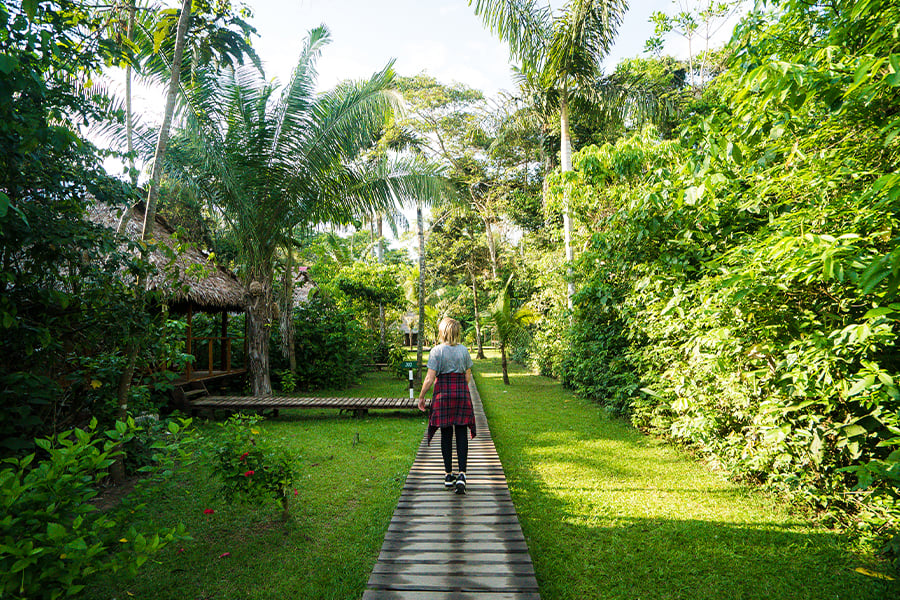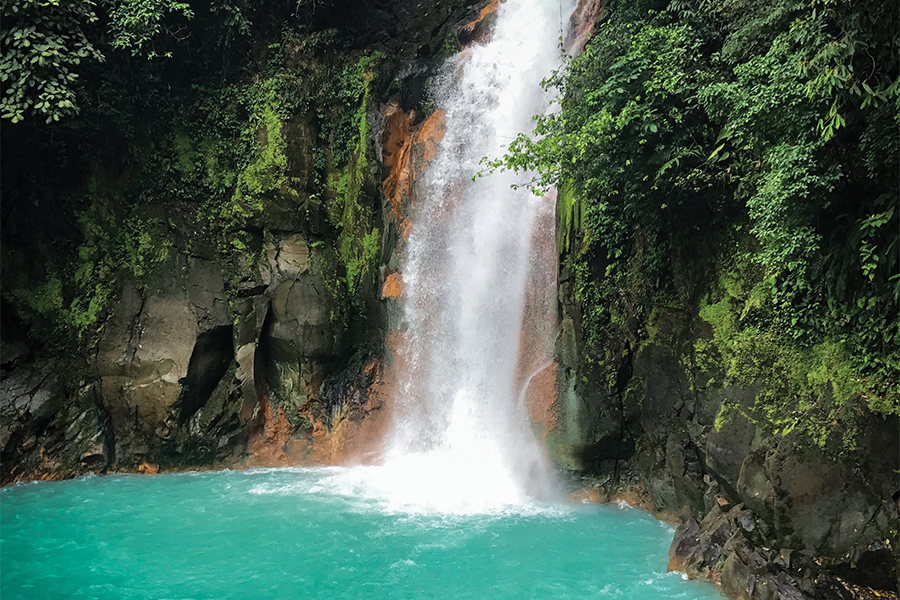The Impact of Sustainable Travel

The footprints we leave while exploring the new and unfamiliar tell stories of curiosity, wonder, new friendships, old places and inspiration for what’s next. Tourism is making a remarkable comeback, but can we maintain this pace while protecting our planet’s people, wildlife and natural resources? It might be our biggest challenge yet.
Tourism Cares: A Catalyst for Positive Change
No industry is better positioned to help people and places thrive than travel. It’s a core value for AAA, which is a strategic partner of Tourism Cares, an industry organization with a shared vision: “Ensuring that the places we love to visit are not harmed by our presence.” Tourism Cares supports nonprofits and social enterprises for tourism-related cultural, historic and natural sites around the world through efforts on many levels. These efforts include grants in three major funds that are responsible for nearly $2.5 million in total giving to projects in more than 42 states in the United States and 30 countries worldwide.
The Disaster Recovery fund restores and rebuilds tourism resources and infrastructures that have been impacted by natural disasters. For example, when COVID-19 halted travel to the Galapagos Islands in 2020, local communities were left with few resources to sustain prolonged hardship. Tourism Cares partnered with Lindblad Expeditions to provide financial support to families, businesses and wildlife conservation efforts.
The Travel Impact fund invests in community-level initiatives that boost tourism with a focus on training to advance education, employment and marketing support in the tourism industry (including local nonprofits). One beneficiary—Nepal’s SASANE (which translates to “Let’s protect ourselves”) Sisterhood Trekking and Travel—uses its funds to help train female victims of human trafficking to lead tours through remote villages of the region. The initiative’s long-term goal is to eliminate gender-based violence and child marriages in those communities.
The Diversity in Tourism fund supports programs that build capacity for underrepresented markets and increase diversity, equity and inclusion. The best way to add authenticity to a tour is to amplify the voices of locals who can tell the story of their homeland as a cultural expert. Tourism Cares—along with a coalition of industry partners—supports the Pathways Project, an organization that provides training for tour directors, tour operators and tour guides.
Partners on a Mission
Sustainable travel isn’t a new concept. Electronic ticketing became mandatory for most airlines in 2008, and hotels have been encouraging guests to reuse their towels for years. Even AAA’s beloved “Tourbook” went digital in 2020. But go to any travel website today and it’s clear: green initiatives are flourishing in every sector of the industry.
Many companies are creating travel experiences based on 17 Sustainable Development Goals adopted in 2015 by all United Nations Member States, with a mission to end extreme poverty, reduce inequality and protect the planet by 2030.
Blazing a trail with itineraries that include sustainable practices, education and community advocacy is AAA Travel’s Club Adventures. “Travel is one of the only industries that touches upon all 17 development goals, which is both exciting and daunting,” says Allison Villasanor, Club Adventures’ director of product and innovation. “At Club Adventures, we’re focused on five goals in particular: No. 8, Decent Work and Economic Growth; No. 12, Responsible Consumption and Production; No. 13, Climate Action; No. 14, Life Below Water; and No. 15, Life on Land. We feel that these goals give us the opportunity to make the most significant impact.”
“Club Adventures is focused on responsibly supporting the communities we visit” says Villasanor. “This means using resident tour guides with intimate knowledge of the area, and supporting businesses owned by locals—especially women and the Indigenous community. This practice ensures that we can connect deeply with our destinations, have a lasting impact and foster community growth.”
In Costa Rica, for example, Club Adventures travelers visit the Maleku community to learn about their heritage and the plans they have for regenerating the forest and natural habitats. In Vietnam, they help local plastic cleanup efforts by attaching a net to each kayak while exploring the scenic waters of Lan Ha Bay. Home stays are another popular tour component that provide authentic experiences for culturally curious visitors and hosts eager to connect with one another.
“We like to share travelers’ stories of small steps, like using public transportation instead of placing an extra vehicle on the road or selecting locally owned hotels and restaurants whenever possible. When we encourage travelers to choose sustainable activities in their travel itineraries and ensure that cultures are respected and celebrated in an authentic manner, we are partnering with them to make the world a better place.”
–Allison Villasanor, Club Adventures
director of product and innovation
#MakeTravelMatter
AAA partners Insight Vacations, Trafalgar and African Travel are founding members of the TreadRight Foundation®, a joint initiative among the brands within The Travel Corporation (TTC) that ensures their positive impact on conservation, communities, culture and the protection of wildlife. Their motto—#MakeTravelMatter—is a guiding principle behind meaningful experiences in their itineraries. In South Africa, guests can join a wildlife caretaker to learn about conservation projects and the care that goes into rehabilitating animals or go behind the scenes with an antipoaching team. Trafalgar travelers in South Dakota help preserve tribal customs and traditions by attending a passionate performance of song, dance and traditional storytelling by Stephen Yellowhawk, a son of the Lakota and Iroquois nations. Guests of Insight Vacations receive electronic documents and travel in eco-friendly coaches—part of TTC’s four-point Climate Action Plan aimed at reducing the carbon footprint to net-zero emissions by 2050.
Tips for Traveling Sustainably
It takes a global village of travelers to create lasting change, but conscious efforts are making an impact, according to Villasanor. “Travelers are tuned in to the efforts of travel providers and the steps they are taking to make the world a better place. It’s more important than ever that tour operators create action plans to protect the planet, our communities and wildlife.”
Travelers—want to make a difference? Here’s what you can do:
Use sustainable travel products, available at the AAA Travel Store. Popular items include eco-friendly reusable bags that fold up into a pouch and hold up to 50 pounds; collapsible telescoping straw sets (complete with a cleaning brush and a compact carrying case); and regenerated nylon handbags made from discarded fishing nets, fabric scraps, carpets and industrial plastic. Reusable tubs of all sizes can carry everything from hand creams to pills, vitamins or small snacks. All options are a great way to carry exactly what you need without packing disposable, single-use plastics.
Minimize paper use. Tour companies are shifting focus to the digital space. In fact, most AAA travel partners provide travel documents and e-brochures that can be uploaded to an app on any mobile device or sent as a link from a travel adviser for easy viewing. The customized AAA TripTik® booklets are retro and cool, but they can also be downloaded to an electronic device, provide easy access to directions with a few clicks, give route options, show fuel and EV charging information and suggest up to 25 stopovers to create a complete road trip.
Visit national parks on a guided vacation. When you purchase a permit to enter a national park, you’re contributing toward the preservation and protection of our country’s natural treasures. In high season, many parks are overrun by private vehicle traffic, creating high carbon emissions, congested trailheads and crowded campsites—all wreaking havoc on the natural beauty and wildlife we cherish. Consider a guided vacation with someone else behind the wheel. Guided tours offer eco-friendly transportation, hassle-free sightseeing and the chance to make new friends. A AAA travel advisor can help make this happen.
Slow down, stay longer. It’s a trend that’s catching on, says Villasanor. “We’re seeing more off-season travel and longer stays in destinations, putting fewer vehicles on the road and giving travelers the opportunity to fully embrace local communities without the crowds.” Settling in also allows time for less conventional exploring provided by local tour operators, restaurateurs and shopkeepers. The options include photography tours, cooking classes and even volunteerism.
B.Y.O.T. Bring your own toiletries in reusable travel size containers. If fewer travelers take the single-use shampoo and lotion in the pretty bottles, fewer hotels will offer them. More and more cruise lines and hotel chains are placing attractive refillable dispensers in the bathroom and on the shower wall. It’s less plastic use and a way to reduce expenses, which may be passed on to travelers.
Carry a refillable water bottle. This is an easy one, with enormous impact potential. Many hotels, cruise lines, safari lodges and all-inclusive resorts are offering aluminum refillable containers adorned with their logo instead of unlimited plastic bottles. It’s a sound investment that speaks volumes about their commitment to the environment.
Use public transportation. Traveling by train—over long or short distances—allows you to take in the scenery while cutting your carbon emissions. In urban areas, consider driving alternatives like subways, local buses or even walking or biking.
Stay on the trail. Hikers can help protect plant and animal life by sticking to marked trails and leaving nothing but footprints behind.





